How are young adults doing in times of Covid-19 and the restrictions it imposes? Dr. Bastian Lange comments from a spatial point of view on their living conditions and pleads for more niches and experimental spaces to be made available for young people in the city as well as in the countryside. The text has been published in German for the Arbeitsgemeinschaft Weinheimer Initiative. The German version as PDF.
Young adults in times of Corona – a missing link?
The global pandemic not only has a geographically different impact on nation states, regions, and cities, it also has an increasingly significant economic and social impact on different social groups. As a global crisis, it further highlights social differences and inequalities. At the same time, systemic areas increasingly represented by status and lobby groups are becoming apparent: in the course of this phenomenon, economy and production are at the forefront.
In the wake of the crisis, however, there are also some social areas that have received little attention: because at the height of the crisis, adolescents and young adults were more likely to be “meagerly supplied” by educational opportunities than by a politically desired appreciation of their situation in life. A far-reaching care and approach beyond digital assistance often failed to materialise.
While the closure of day-care centers, kindergartens, schools and universities as a result of the pandemic concentrated attention on care and teaching staff, it was only with a time lag that attention was focused on the circumstances and mental state of adolescents and young adults aged between 14 and 22. Since May and June 2020, policymakers have been focusing their attention on systemically relevant areas rather than directly on the generation of young adults in the course of economic recovery efforts. They fell out of the political arena.
A lack of lobbying for young adults and the teachers’ union’s priority efforts to protect its “teachers” clientele did the rest in order not to give the generation of young adults a voice and not to integrate them into the political discourse. Parents (as well as associations of school parents) were (and still are) outraged; the opportunity of the education system to renew itself and to experiment on a broad basis was missed. Not only have opportunities to adapt, to innovate, and to reorganise the school system been missed, but more often, existing social ties and bridges between teachers and pupils have been broken. The prescribed physical distance created a social one.
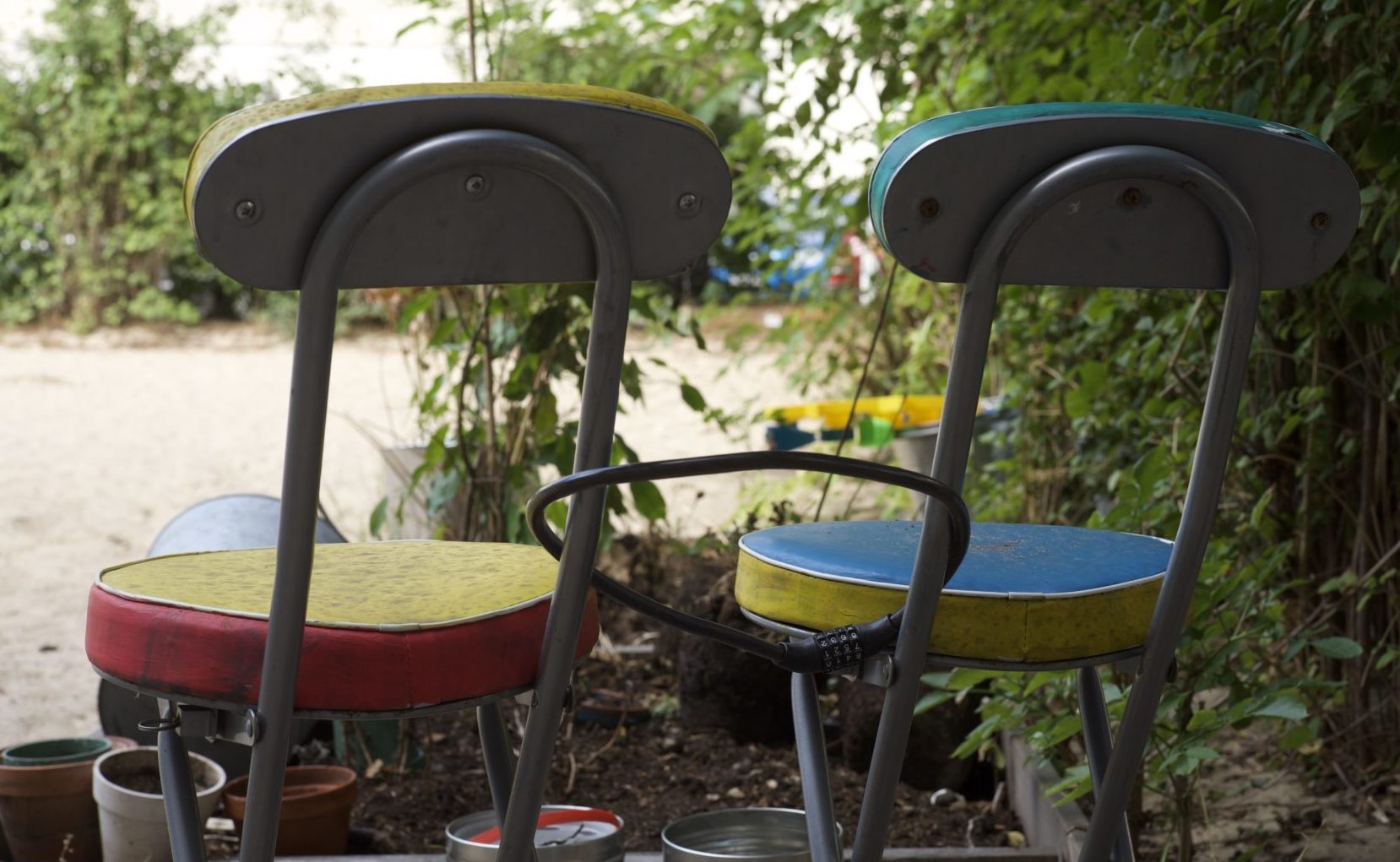
Are there signs of a new post-Covid-19 revolt in the cities?
It was not until June 2020 that young people began to attract attention and make themselves heard, sometimes with disturbing activities. These included above all the many surprising youth riots in city centre of Stuttgart (federal capital of the state of Baden-Württemberg in southern Germany), but also party activities and attempts to revive parties in both the city and the countryside. “Young people have been largely forgotten in the Corona crisis,” DER SPIEGEL quoted political scientist and youth researcher Bernd Holthusen on June 26th, after, according to the local police report, around 500 young people took action against the police, demolishing and sometimes looting shops and stores in the city centre of Stuttgart.
In view of these events, Die ZEIT on 25.06.2020, (No.27, p. 2) pointed out the role of the “Halbstarken” (German for yobs or beatniks) in West Germany in the 1950s. Riots, such as that which took place in Schwabing in 1962, was essentially apolitical, as diagnosed by DIE ZEIT, i.e. it was rather an expression of everyday uncertainty in the face of uncertainties in coping with life.
As in those days, however, the stereotypical image of the aggressive, masculine and alcoholised, party-happy young man who, in a group, can’t help but simply “let it all hang out” after months of cramped living, was soon to be heard in June 2020 during lockdown. Psychologically vulgar, an angry cocktail is seething in them, which could no longer be controlled by state power, regulations and rules of distance, and which now wants to do his “own thing” in the presence of like-minded parties.
Stuttgart, the orderly “heart chamber” of the economic powerhouse of Swabia, had perhaps last experienced such riots in the 1960s, when the harbingers of beat culture at music concerts destroyed the interiors of event and concert halls, leaving behind a trail of great irritation and anger due to their “boorish” behavior. Under the pressure of the media to explain, the youth researcher Holthusen can only diagnose that it will be necessary “to look at the everyday life and needs of young people and to think about how we can enable them (the young people, B.L.) to live out their youthfulness in the Corona crisis”.
This is a way to take a closer look at the context of young adults. For it is fermenting in the collective resonance space of the youth, who are afraid of not being able to fulfil their life’s wishes and not being able to follow educational paths and not being able to participate in the transition from the first (school) to the second qualification level (apprenticeship/study). “Bridging models” such as internships, trips abroad, holiday jobs in Germany or abroad, trainee programmes and other variants, are currently hardly possible or no longer available.
With this text, I would like to point out from a spatial point of view which structural cornerstones of a misguided cultural spatial and urban development policy for adolescents and young adults become more and more manifested in the pandemic. So as not to be misunderstood: There is no doubt that – despite increasingly reliable findings about the weaker effects of infection on children and young people – it is imperative that orders and regulations on distance, contact restrictions and hygiene rules are practiced by all sections of the population. This also applies to young people, as difficult as it is to connect the insight into this rationality with latent and manifest processes of freedom in their phase of life.
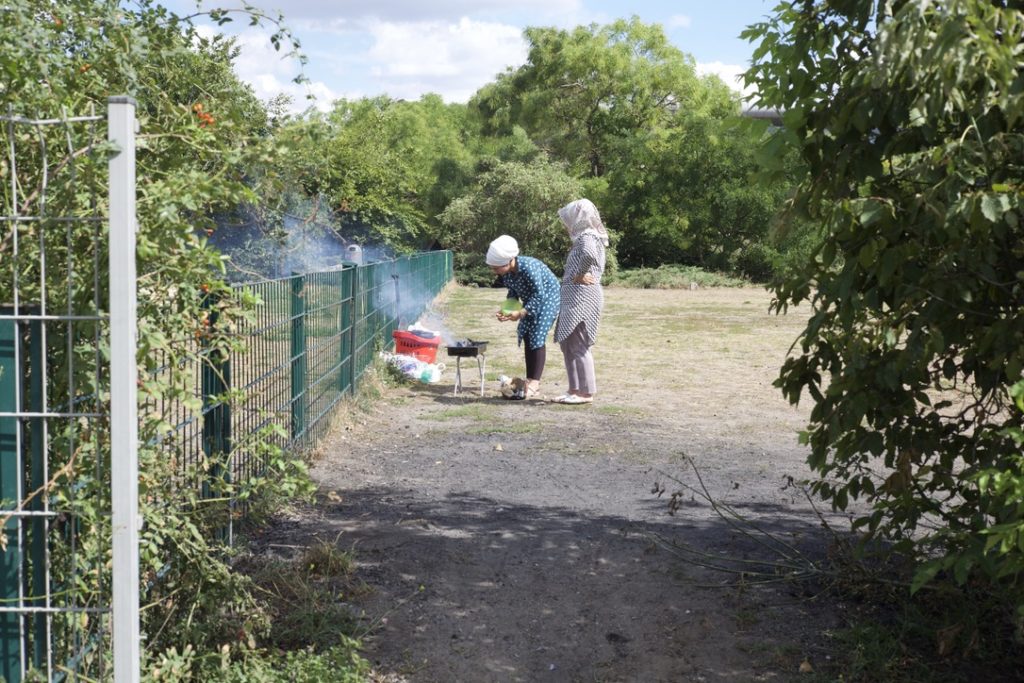
Diverse youth require diverse spaces
I argue from a spatial perspective, i.e. with the question of how people acquire spaces in the city and in the countryside through individual or collective action. These forms of appropriation, for example of social and cultural meeting places, can be temporary or permanent. The example of youthful forms of spatial appropriation already shows how differentiated the use of space is. Girls are different from boys or diverse youths. While larger cities have more built or built up niches, in less densely populated areas a submergence under the radar of family, institutional or state supervision is nevertheless tied to comparable forms of practice: The barn is the equivalent of the garage in the big city, the skater track as a meeting place has similar social functions to the cross-country track in rural areas. It’s all about personal experiences, peers, experimenting on the sometimes stony paths and detours into adulthood.
This knowledge of the importance of experience, testing and experimental cultures is a major narrative that stretches from Goethes “young Werther” to the rebellious beat and pop culture of the 1960s and 1970s and finds its ironic refraction in the image of the capitalist hip hop protagonist. Deviations from the mainstream, rejection and turning away from various custodies, mark processes on the way to new (adult) worlds.
These worlds are imaginary, on the one hand, by opening up the possibilities of projection spaces giving another life of their own. On the other hand, however, they are linked to concrete geographical conditions, where new experiences can be made. A characteristic of these spaces is that they are in-between spaces: Not completely finished, not uniformly defined, not primarily consumerist and not completely autonomously organized. Youth centres, youth clubs and rather autonomously self-governing youth places mark a spatial-structural as well as educational-political intention to allow these spaces in liberal and open societies.
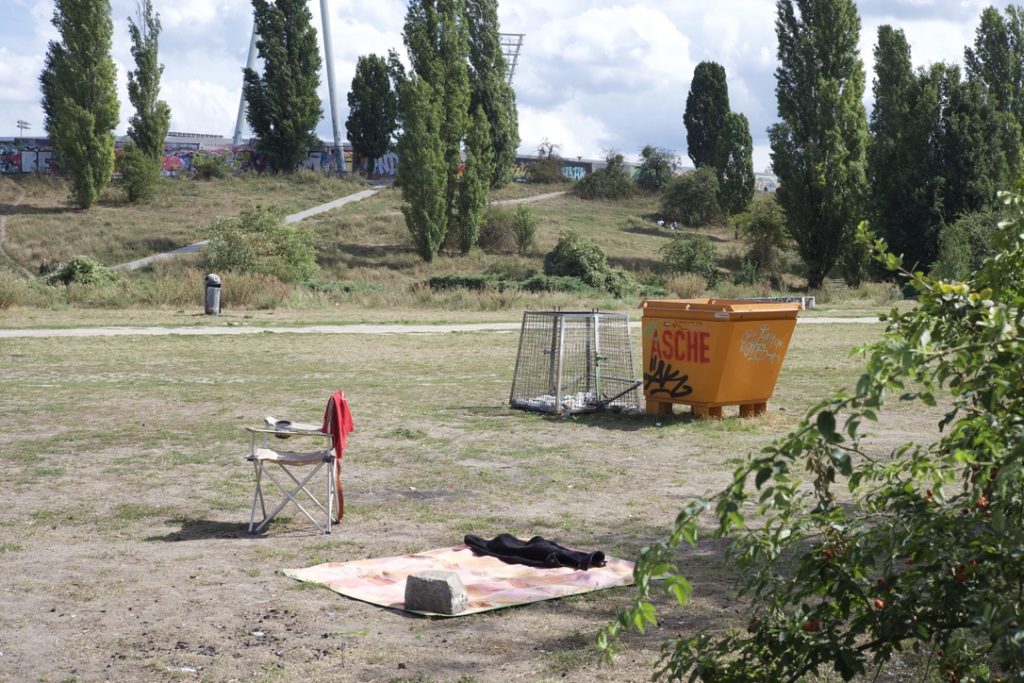
Urban policy has created spaces for trade and commerce, not for youth areas
The tacit turning away from these spaces, their waning acceptance by politicians and young people, lack of funding but also doubts about their pedagogical fit have led in many places to the fact that such offers in the form of youth centres and similar places have become rarer. Open-air rave and dance events in changing locations in combination with the entry of many young people into digital network spaces have expressed the need to change their behaviour, but also to change the situation confronting them.
An urban policy since the 1980s and 1990s has done the rest to keep public spaces “clean” for the sake of consumption purposes, to upgrade them aesthetically for tourism and to place them at the service of commerce aiming at optimizing consumption at all levels. Unadapted and non-consumptionist behavior had little or no chance. Furthermore, building densification in residential areas has gradually led to the fact that in the 2000s the last football pitch fell victim to a housing project or small-scale green park, or even an urban-gardening project.
There is no doubt that there are counteroffers: However, skater parks, climbing walls and halfpipes only partially fulfil a purposeless purpose, such as drifting, hanging out, chilling or meeting up without a direct purpose. This sense is initially self-fulfilling for itself and the young people, rather than referring to a consumerist-capitalist spatial form offered from outside.

Youth in the pandemic
The government regulations on the outbreak of the pandemic initially put a stop to all people, including adolescents and young adults. What remained were the own four walls within the family. In return, a dynamic shift towards digital worlds took place: Playing, learning, communicating or just to pass the time. This was not new, it only increased among those who had the technical resources and network access, or no everyday socialites.
Those who didn’t have a computer or tablet ran the risk of being quickly socially disconnected and unable to relate to other young people with the digital tools and interaction offerings. Cramped apartments did the rest, and the only way to get exercise within the prescribed limits was to work out on yoga mats.
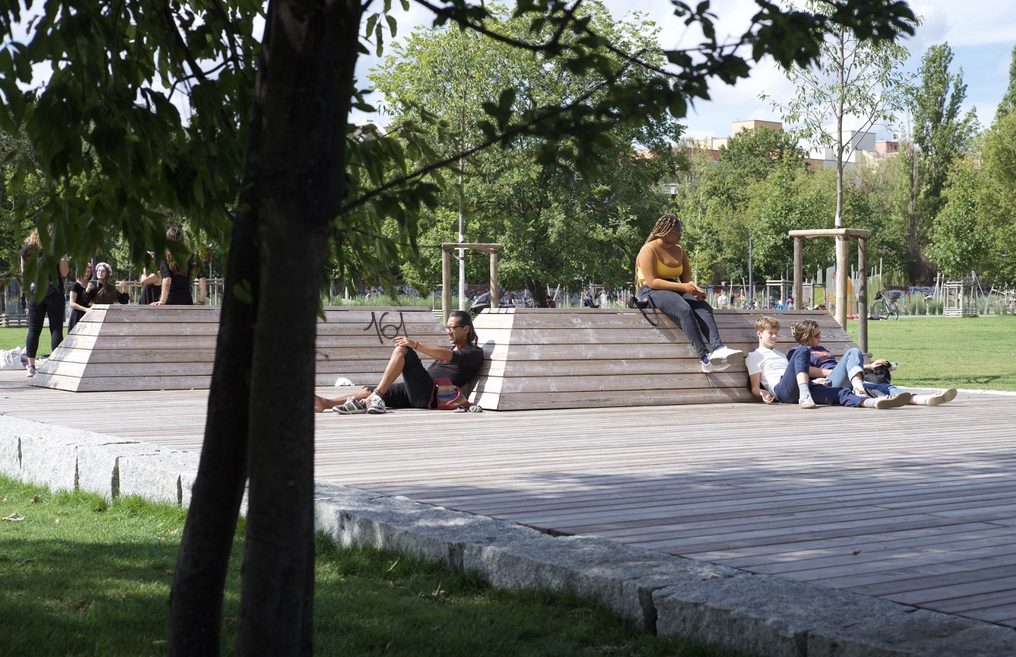
Return to “normal” rooms?
Since May and June 2020, the loosening of the lockdown restrictions has partly opened up institutional spaces. Schools, playgrounds, meeting places – with distance rules – have been returned to controlled access to the population and their users. However, the controlled loosening has only increased the problem of missing places and spaces. For they are not only “assigned places” for young people, but practice spaces, i.e. places that have been appropriated by young people through certain practices and behaviour patterns become “their” places first.
However, these collective and situational forms of practice were not permitted for a long time due to the regulations on distance, and have then intensified a loss of quality of specifically youthful behaviour: namely, to make autonomously “their own thing” and to practice this in the mode of experimenting and exploring at the places that are suitable from their point of view, which is basically not fully accepted by the wider public.
Taking this burden of need as well as experience to have fun and enjoy life in times of crisis into account and literally giving it space is still hardly the subject of debate in public discourse. This is undoubtedly also difficult to justify, as it is still necessary to preserve and protect life. However, it seems urgently necessary to acknowledge it and to give it attention, if one does not want to follow hasty assessments and prejudices of the “drunkard man who once freed himself”.
A closer look at the forms of practice of young adults reveals, in return, claims of empowerment of young adults: Practices of drifting, hanging out, strolling and wandering are shifting – of necessity – from the consumerist places of shopping malls and shopping streets to the remaining urban wastelands, green spaces, parks, backyards and parking lots.
This type of retreat, however, lingering in pandemic crisis is not tolerated, so it is obvious that urban and spatial planning failures as well as the pandemic itself have dramatically exacerbated the lack of suitable meeting and appropriation spaces. The riots in “Stuttgart” are thus not an expression of the pandemic, it has “only” exacerbated a misguided urban and spatial policy in the crisis from the perspective of young adults: If urban spaces are functionally, consumerist and aesthetically controlled, then there are hardly any spaces for young people to explore and experiment.
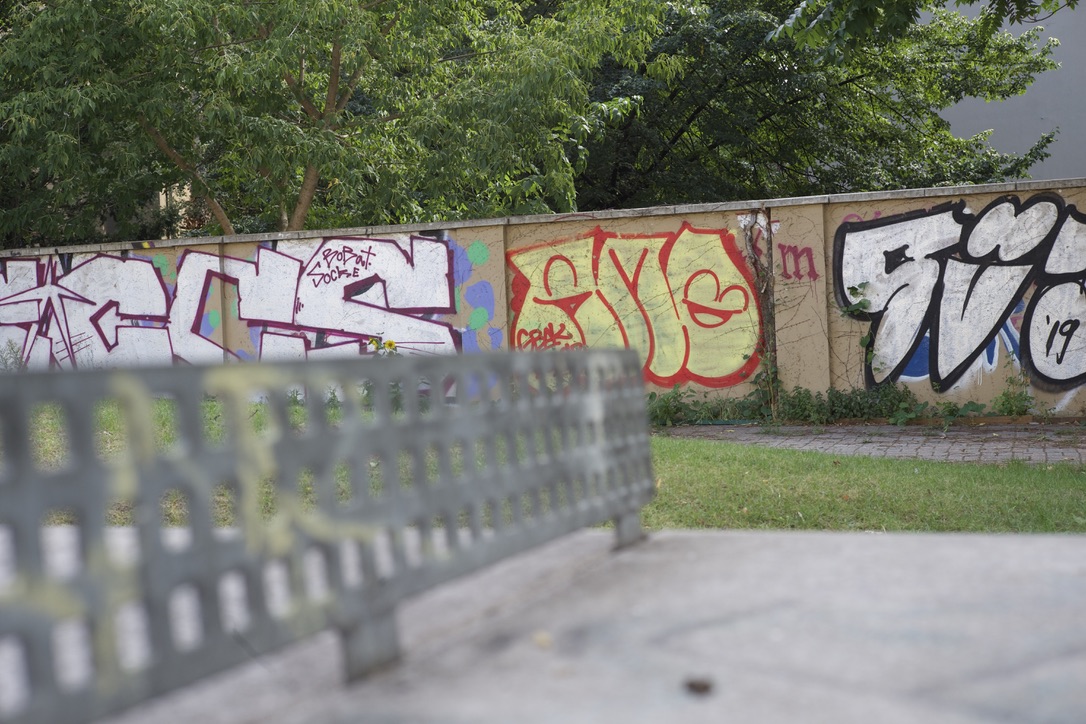
Where are the spaces for young adults?
The idea of spaces of possibility and retreat may evoke romantic images and, in part, have a transfiguring and glorifying effect. If one looks at such imagined transitional spaces from the perspective of young adults, however, new places, such as open workshops, creative labs, repair cafés and other experimental spaces, become apparent. Open workshops, repair cafés and other experimental spaces such as open creative labs are mostly freely accessible places offering infrastructure and tools: The Association of “Open Workshops” e.V. in Germany defines them as follows: “Open workshops are available to everyone who wants to be active in craftsmanship or artistic work. Often, Open Workshops are the result of private initiative, sometimes they are part of cultural, civic or youth centres, less often of companies. While some have decades of experience, others are still in the process of being established”. (Association of Open Workshops 2015)
With the Internet and the spread of everyday virtual communication, new analogous places for tinkering, and, repairing as well as exploring have emerged. They are embedded in new cultures of producing, sharing and exchanging, which are partly linked to associations and initiative groups, but also to open social communities and scenes as well as peer groups. In these new places, unconventional forms of working with e.g. recyclable materials are currently being tested on the basis of social practice communities, which for example emerge from the small-scale combination of manual activities with digital technologies. But also screen printing workshops, bicycle repair shops and FabLabs are part of this. In the process, previously unchallenged rankings of the economic and social relevance of work are shifting from the primacy of the economic to the social and from standardized work processes to experimental practices.
In these experimental spaces, work practices can be carried out in changing social compositions and individual pieces (prototypes) can be built. Individual productions, individual repairs and think pieces are useful in a certain sense but are not designed to achieve economic “returns”. Rather, in these open source cultures, the blueprints of objects relevant to everyday life are “hacked”. The practice of hacking means, for example, taking a bicycle apart from its basic elements in a bicycle repair shop and putting it back together again.
This basic principle is political in the sense that these bicycle repair shops, as well as open workshops in general, work on regaining autonomy over the necessary everyday objects that one has acquired or that one needs for a good life. Sharing cultures of goods and knowledge are thus, on the one hand, caring cultures of togetherness and punk attitudes, with which one works against the dominant hegemonic consumerism of the large corporations, which do not disclose their construction plans, like to keep objects unrepairable and have no interest in long product life cycles. In these alternative and diverse places, young adults can thus take their own paths into self-determined doing and letting go and do this in peer networks.
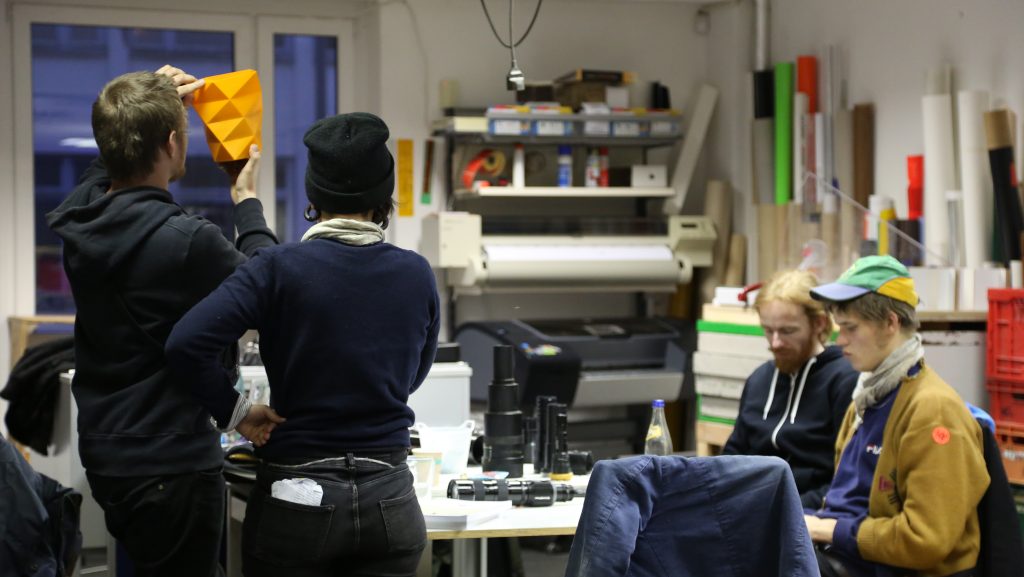
Conclusion: Are open creative labs new places of situational socialising for young adults?
In the future, small, medium-sized and large cities will generally need more access to spaces in order to test new collective ways of shaping life, parallel to training, acquisition and “finding one’s way in life”. If one follows this thesis, this fits in with the increased importance of self-organised experimental spaces such as the above-mentioned Open Workshops, FabLabs, HackerSpaces, screen-printing workshops, cargo bicycle repair workshops and bicycle repair shops. There, building plans of everyday life-relevant forms of existence such as clothing, education, nutrition, mobility, communication are hacked and self-determinedly recombined.
Such spaces are not only functional spaces, but so-called “third spaces”, in which alternative practices are carried out and forms of communalization in the local can be designed. Interestingly, there are selective approaches via extended accesses in new library models, semi-public transitional spaces of public cultural institutions, etc. Such a spatial perspective on the life paths of young adults in the post-Covid-19 era takes its starting point in the decline of self-organised youth centres and youth spaces, which as a form of communalisation and self-organisation were key figures as transitional spaces between family, school and education for many years.
In the future, a kind of spatial transition design for young people is needed, in which not only spaces for young adults should be created, but also how transition cultures and social transition spaces in general should be designed, which make participation by and between young people tangible in the long term and are able to demonstrate self-efficacy.
Such spatial options for young people are driven by a new change in consciousness. The age cohort of 14-22 year olds shows a broad spectrum of one-off protest forms (Friday for Future), regularly ordered deviant behaviour in school and everyday life, such as ways to change nutrition, mobility and consumption behaviour in the form of (self-)organised working groups and workshops as well as temporary protest forms (e.g. through extinction rebellion, or in local climate alliances or similar).
From the point of view of young adults, the question arises not only how they can continue to deal with the achievements, experiences and learning processes they have gained, but also where and in which places they can continue to experience their self-efficacy in experimenting with their goals and wishes.
Appendix
The text has been published in German for the Arbeitsgemeinschaft Weinheimer Initiative in July 31th 2020. The German version can be downloaded here as PDF.
